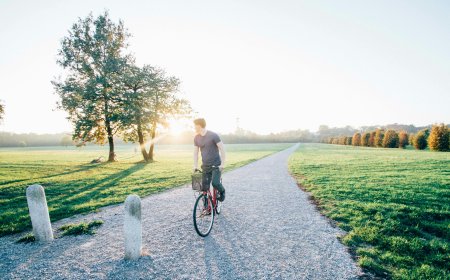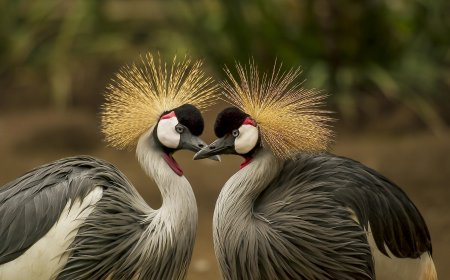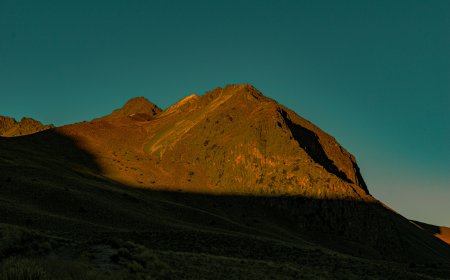How to capture stunning landscape photos
Enjoy capturing landscapes using natural lighting effectively, seek out unique angles, and utilize appropriate camera settings to achieve stunning photos that reflect the beauty of nature in all its details.

Enjoy capturing landscapes using natural lighting effectively, seek out unique angles, and utilize appropriate camera settings to achieve stunning photos that reflect the beauty of nature in all its details.
How to capture stunning landscape photos
Landscape photography is an art that requires a deep understanding of nature and precise technical skills to transform its beauty into artistic images. It all begins with planning and preparation, where the photographer must first choose the right location and determine the ideal time to capture the image, taking into account lighting conditions and weather.
Once at the location, the photographer must search for the best viewing angles for the landscapes, aiming to select unique and interesting angles that highlight the beauty of the surrounding environment. Then, they must adjust the camera settings appropriately, such as aperture, shutter speed, and ISO sensitivity, to ensure achieving the optimal exposure and maintaining clear details in the image.
Natural lighting is essential in landscape photography, and it should be used intelligently to achieve the best results. The photographer can leverage the variable natural light in different weather conditions to add aesthetics and depth to the images.
After capturing the photos, editing software can be used to enhance their quality and align them with the photographer's artistic vision. This includes adjusting brightness and contrast, enhancing saturation and vibrancy, and color correction if necessary, without losing the natural essence that makes the image unique.
The photographer should be creative and passionate about capturing the enchanting moments of nature and enjoy transforming those moments into images that tell beautiful and interesting stories.
Determining the perfect camera settings for landscape photography
Determining the perfect camera settings for landscape photography is crucial to ensure capturing stunning images that accurately reflect the beauty of nature with precision and clarity. This requires a deep understanding of how each camera setting affects the final image.
First and foremost, the photographer must think deeply about what they want to convey in the image. Do they want to capture intricate details in the landscapes? Or do they prefer the image to have a more romantic or artistic atmosphere? These questions guide the choice of settings.
One of the key factors is the aperture of the lens, which determines the depth of field of the image. For landscapes where you want to capture clear details in the foreground and background, you may want to use a small aperture (larger f/number) to achieve a deep depth of field. However, if you want to focus on a specific element in the scene and achieve a blurry background effect, you can use a larger aperture (smaller f/number).
Secondly, shutter speed must be considered, as it affects the movement of elements in the image. For capturing steady landscapes, you can use a slow shutter speed (usually less than 1/100 seconds) to avoid image blur. If you want to capture moving elements such as trees or clouds, you may need to use a faster shutter speed to avoid motion blur.
Finally, ISO sensitivity must be considered, as it determines the camera's sensitivity to light. Low ISO values should be used whenever possible to reduce the appearance of noise in the images, especially in good lighting conditions. However, if the lighting is low, you can increase the ISO value to compensate, although this may increase the appearance of noise in the image.
By paying attention to these factors and adjusting the camera settings according to the surrounding conditions, the photographer can achieve the perfect landscape images that reflect their beauty with all their splendor and details.
Effectively using natural lighting in landscape photography
Effectively using natural lighting in landscape photography is crucial for capturing stunning and breathtaking images that showcase the beauty of nature in the best possible way. Natural lighting provides the opportunity for photographers to capture fine details and bright, natural colors that add attractiveness and vitality to the image.
First and foremost, the photographer must understand how the angles and directions of light affect the landscapes. In harsh lighting conditions, this may result in harsh shadows that reflect undesirable details, while soft lighting can create calm and romantic atmospheres.
Secondly, the photographer should pay attention to the time of day and weather conditions to control the quality of light. During the early morning or sunset hours, the light is warmer and softer, creating beautiful atmospheres for photography. In cloudy weather conditions, thick clouds may provide even and soft lighting without harsh shadows.
Thirdly, the photographer can use elements present in the landscape itself to direct light and create unique effects. For example, trees or mountains can be used to filter and direct light towards the subject being photographed.
By effectively using natural lighting, the photographer can add depth to landscape photos and turn them into pieces of art that express the beauty of nature in all its details and colors. By paying attention to details and utilizing lighting appropriately, the photographer can achieve stunning and breathtaking images that capture the beauty of the natural world in all its splendor.
Exploring innovative photography angles for landscapes
Exploring innovative photography angles for landscapes presents an exciting challenge that photographers seek to achieve distinctive and creative images that highlight the beauty of nature in a unique and thrilling way. This creative process requires innovation and thinking outside the box to explore unconventional angles that add attractiveness and excitement to the image.
Firstly, the photographer must be prepared to meticulously explore locations and search for unique angles that reflect the beauty of the landscapes. This can be achieved by bending or walking along the paved road, or even climbing rocks to get a high angle that provides a new perspective.
Secondly, the photographer can use the natural elements present in the landscapes themselves to achieve innovative shooting angles. For example, trees or rocks can be the central focus in the image, or they can be used to frame the landscapes artistically and aesthetically.
Thirdly, the photographer can use the varied terrains and different natural landscapes to achieve unique shooting angles. This can be achieved by exploring slopes, valleys, lakes, or beaches, and using them as exciting backgrounds for the photos.
By exploring innovative photography angles, the photographer can add an element of excitement and creativity to landscape photos, elevating the viewing experience to a new level of beauty and uniqueness. By paying attention to details and innovating in different ways to photograph landscapes, the photographer can create unforgettable images that highlight the beauty of nature in a stunning and mesmerizing way.
Advanced exposure techniques to improve the quality of landscape photos
Advanced exposure techniques play a crucial role in enhancing the quality of landscape photos, helping to reveal details more clearly and achieve a balanced lighting to improve the aesthetic appeal of the images. These techniques allow photographers full control over how the image is exposed to light, enabling them to achieve optimal results regardless of additional conditions.
Firstly, the advanced exposure technique known as High Dynamic Range (HDR) can be used to enhance the quality of landscape photos. This technique aims to expand the exposure range in the image, allowing for the presentation of fine details in both the dark and bright areas of the scene simultaneously. Consequently, images with a wide dynamic range are obtained, accurately reflecting the beauty of nature and its unique details.
Secondly, Exposure Bracketing can be used for landscape photography, which is a technique that allows the photographer to capture a series of images with different exposures of the same scene. This is usually done by switching between different light exposures, allowing for the selection of the final image with the best exposure that perfectly shows the details in every part of the scene.
Thirdly, Exposure Blending technique can be used to merge multiple images with different exposures into a single final image. This is done by blending the enhanced parts of each image to create a balanced final image that reflects all details clearly without loss or masking.
By using these advanced exposure techniques, photographers can enhance the quality of landscape photos and make them appear stunning and breathtaking, enhancing the beauty of nature and conveying the viewing experience in a way that suits its unique details and uniqueness.
Visual integration
Visual integration in landscape photography is a crucial process to achieve stunning and captivating images that reflect the beauty of nature in all its details. Visual integration refers to the ability to merge various visual elements within the frame in a way that makes the image cohesive and appealing to viewers.
Firstly, visual integration in landscape photography involves focusing on achieving balance in the elements within the frame, such as colors, backgrounds, shapes, textures, and lines. These elements must collaborate together to create an attractive and visually cohesive image.
Secondly, visual integration also involves the ability to creatively use the natural elements present in the landscapes to enhance the image. Photographers can use trees, rocks, mountains, or rivers as central elements in the frame, or even to add depth and dimension to the image.
Thirdly, visual integration in landscape photography involves the ability to choose the appropriate frame and the right angle that highlights the beauty of nature as a whole. The frame should be carefully chosen to reflect the best aspects of the scenery and convey a sense of tranquility and beauty.
By effectively using visual integration in landscape photography, photographers can create stunning and inspiring images that better express the beauty of nature. This requires a deep understanding of visual composition and the ability to use different elements cohesively to achieve the desired results.
Steps to highlight the beauty of landscapes
Highlighting the beauty of landscapes in photography requires following specific steps to ensure the best results. Here are some important steps to highlight the beauty of landscapes in photography:
1. Choose the right location: The photographer should select locations that boast stunning natural beauty, such as mountains, lakes, forests, and beaches. Choosing the right location helps in capturing exceptional photos.
2. Pick the perfect timing: The photographer should choose the right time to take photos, such as early morning or sunset, when the lighting is best for highlighting the beauty of landscapes.
3. Use appropriate photography techniques: The photographer should use exposure, focus, and framing techniques correctly to ensure achieving the desired results in highlighting the beauty of landscapes.
4. Focus on details: The photographer should focus on small details in landscapes, such as flowers, leaves, grass, and trees, to add depth and detail to the photos.
5. Artfully use lighting: Artful use of lighting is crucial in highlighting the beauty of landscapes, such as using shadow and light to add depth and detail to the photos.
6. Utilize aesthetic elements: The photographer can use aesthetic elements, such as water features or fog, to add charm to the photos and enhance the beauty of landscapes.
7. Post-processing editing: The photographer should use editing software to enhance and improve the beauty of landscapes in photos, such as adjusting colors, enhancing contrast, and increasing sharpness.
By using these steps, the photographer can effectively highlight the beauty of landscapes in their photos, conveying the unique spirit and aesthetics of nature in a way that suits its details, colors, and terrains.
Summary
To capture stunning landscape photos, a photographer must follow several important steps. First and foremost, selecting the right location and time is crucial for capturing photos when natural lighting is at its best, such as during sunrise or sunset. Then, choosing the perfect angle that highlights the beauty of the landscape and adds depth and allure is essential. Additionally, meticulously adjusting camera settings, including exposure, aperture, and shutter speed, is necessary to achieve the desired effect and capture every detail clearly. Finally, post-processing the photos after capturing them to enhance their beauty and make them more vibrant helps present stunning landscape images that reflect the beauty of nature at its finest.
Sources
1. Landscape Photography 10 Tips for Capturing Stunning Photos An article from Digital Photography School offering valuable tips for both beginner and professional photographers on how to capture amazing landscape photos.
2. How to Capture Stunning Landscape Photos An article from Photography Life providing detailed tips on selecting the right location, adjusting camera settings, and effectively using lighting to capture beautiful landscape photos.
3. How to Capture Stunning Landscape Photos Using a Smartphone An article from Light Stalking offering useful tips for photographers using their smartphones to capture landscape photos.
What's Your Reaction?









































































































